Insights
Creating immersive experiences with light
Feb2
Shared By Felicia Constantine
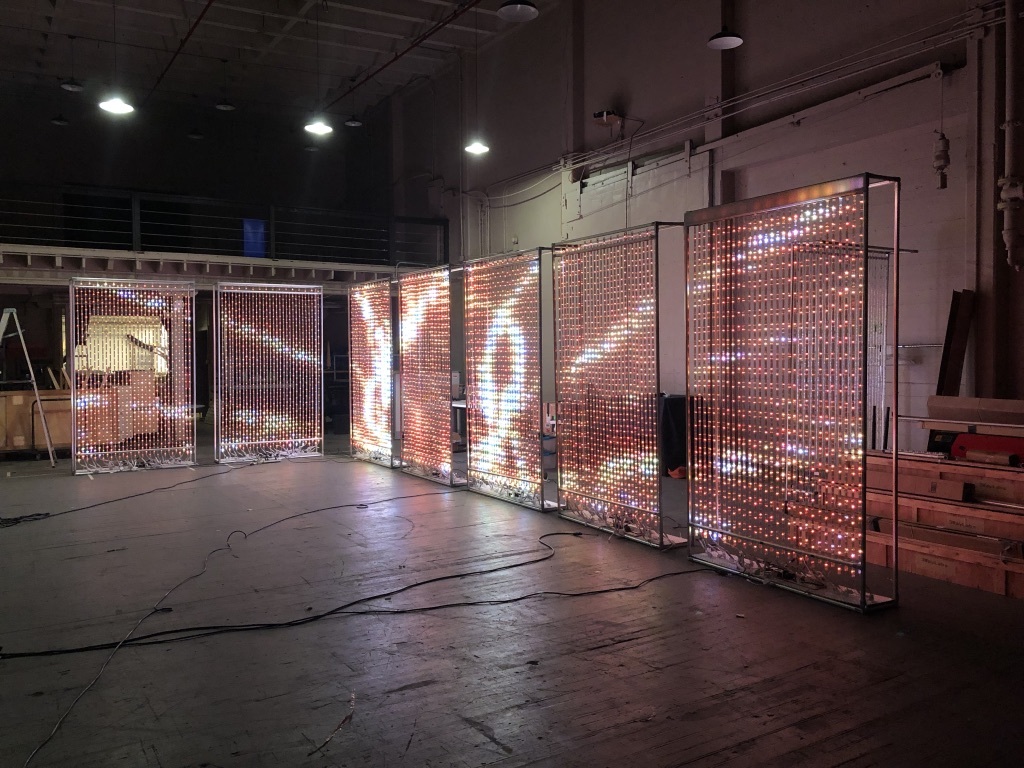
At Britelite, we’ve been incorporating lighting into our projects from the very beginning. We initially used controllable fixtures, however, developments in lighting technology, especially around LEDs, have opened up many new possibilities. Let’s go through the different ways you can use light to enhance an immersive experience, and the skills and capabilities required.
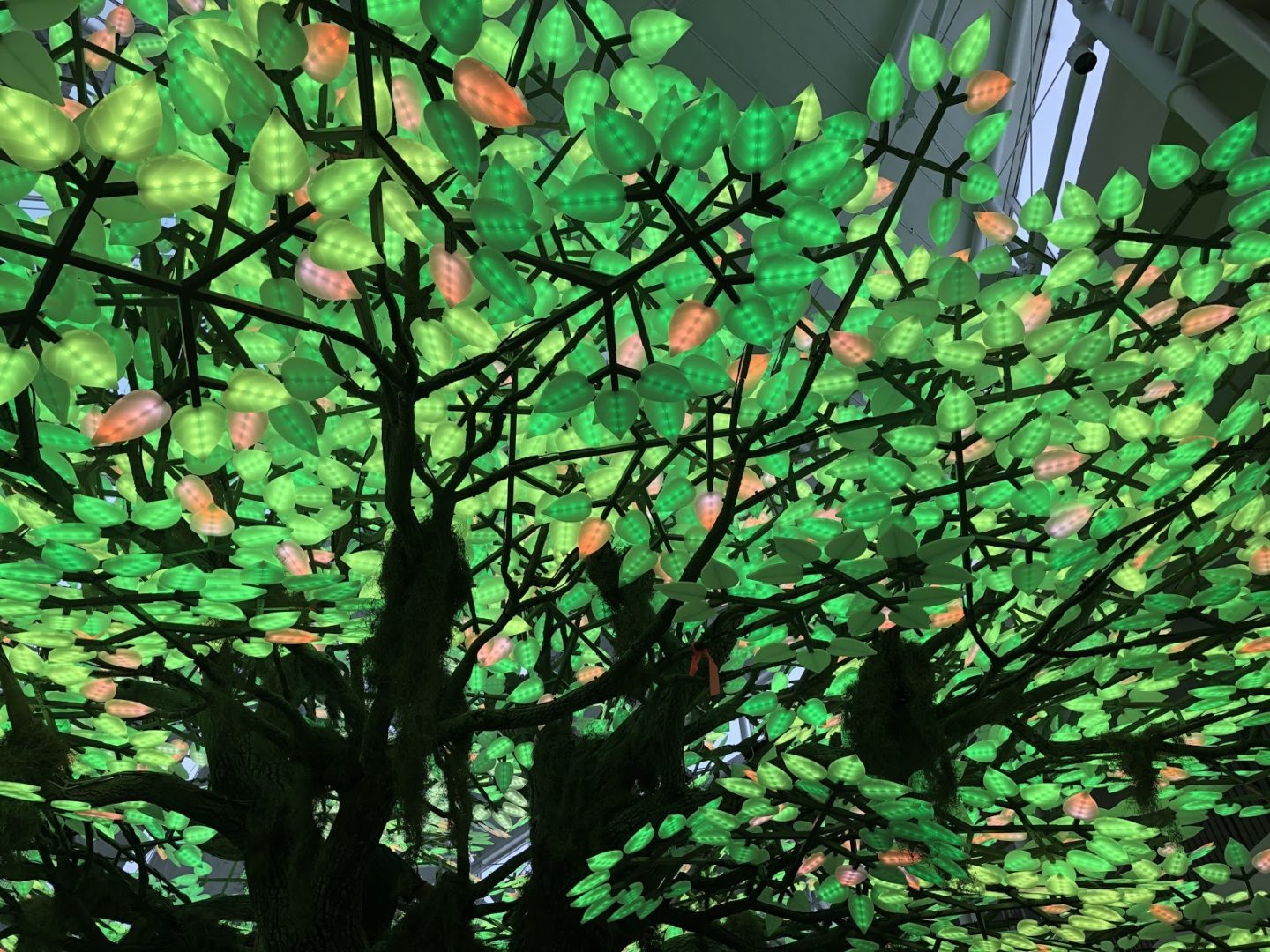
LEDS AS ACCENTS
Adding LED lighting is a great way to add impact to an interactive experience. People today are already very familiar with screen-based experiences, so using LEDs to complement and enhance an interactive installation makes a lot of sense.
For our Perfect Pint project at Visa Payment Forum, we used LEDs to highlight specific interactions in our automated beer pouring kiosk. LEDs were used to draw attention to an NFC card reader, an automated selfie-camera, and most importantly, a freshly poured beer!
In this project, we integrated Arduino micro-controllers with LED strips, and connected them to the core app that drove the kiosk.
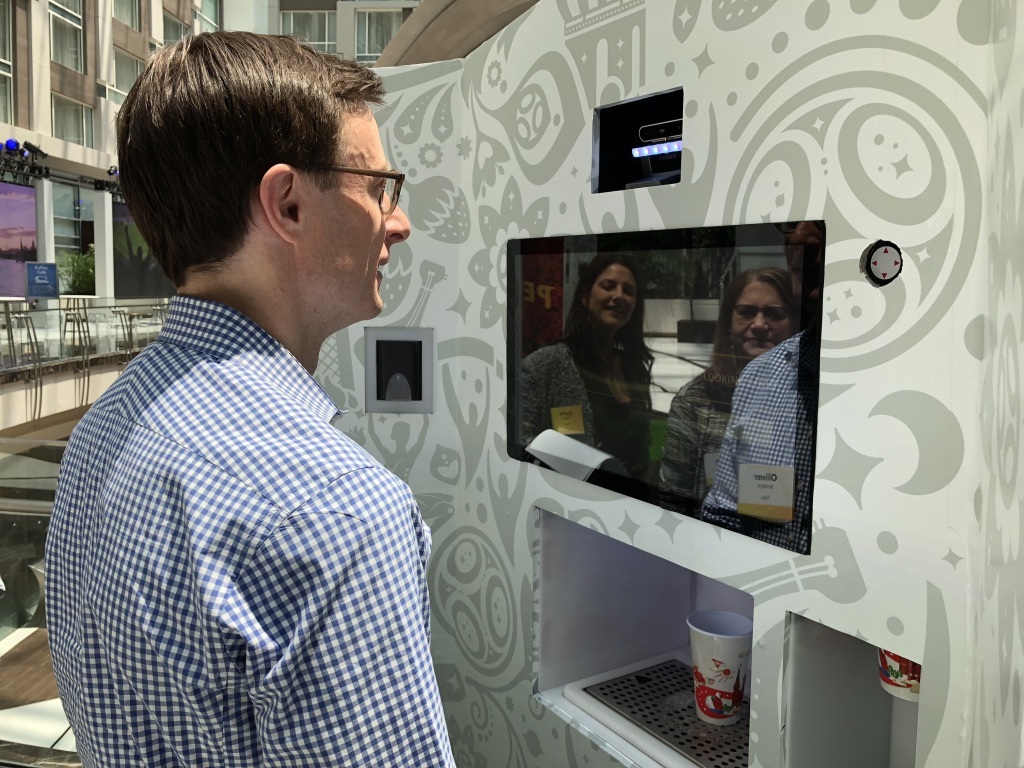
For the gala celebrating the opening of CPMC’s brand-new Van Ness hospital, we created a network of sensors to read smart bracelets worn by the attendees, in order to provide a personalized experience.

We used animated LED rings to draw attention to the sensors, and indicate when the bracelet had been successfully scanned. Here the implementation used Raspberry Pi computers, which managed the sensors and drove the LEDs. At the same time, these computers are capable enough to be integrated into our overall event management system.
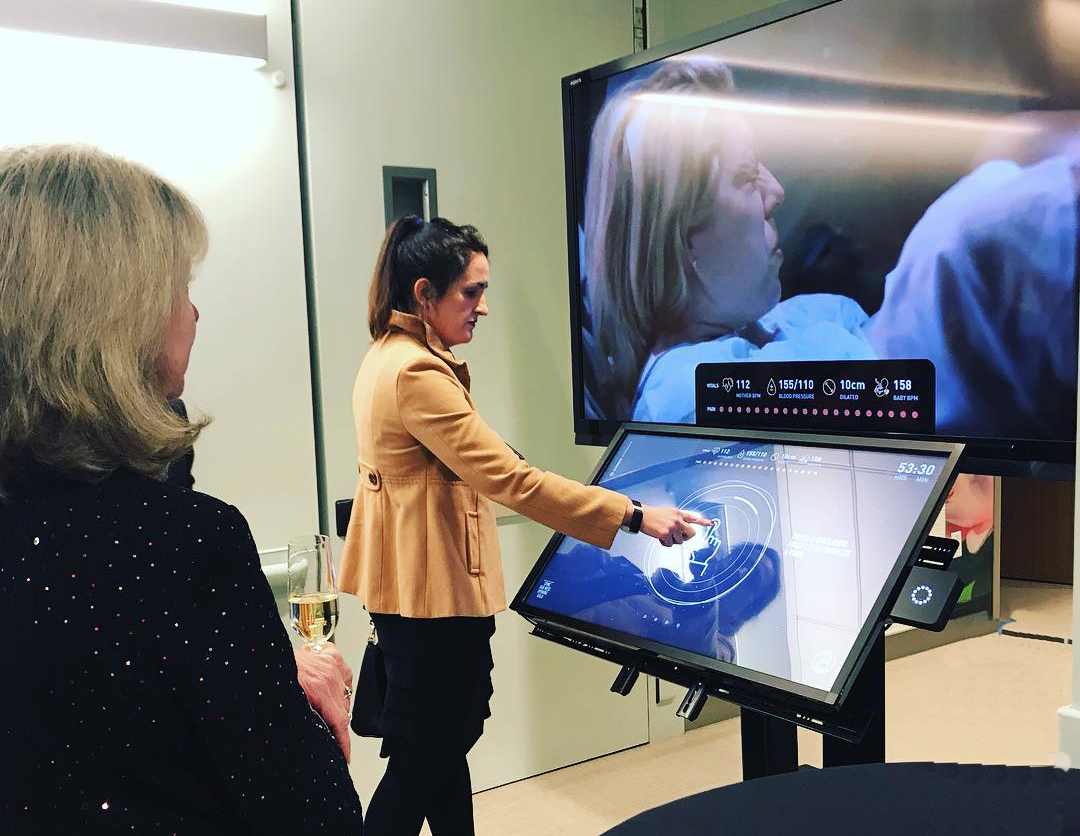
LEDS AS A DISPLAY SURFACE
Another highly impactful way of using LEDs is as a display surface, using them to present videos and animations, but in a much larger and brighter format than a typical screen.
For the CPMC gala mentioned before, we were charged with transforming the VIP floor by using light. For this, we built a system of LED panels that completely covered the walls, creating a truly immersive space.

These panels can be used with the popular ArtNet standard for lighting control, which requires setting up a network of all the LED control boxes. We designed and built custom 8’ x 5’ LED panels, using a new type of tubular LED fixture designed for use in chandeliers. We adapted an existing software package to play back video clips and map them onto the lights, with algorithms to make them change over the course of the evening.
These panels are designed to be easily moved and redeployed, and we used them again at San Francisco Design Week, in a completely different layout. (Shown here at our R&D lab).
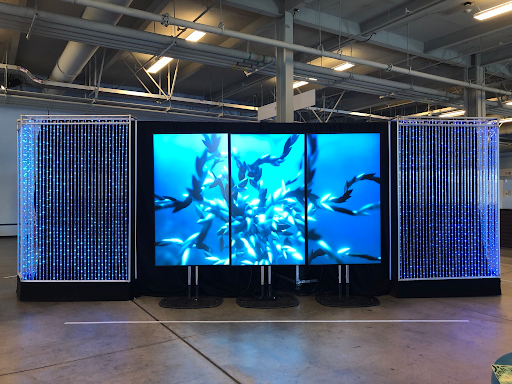
SCULPTURAL FORMS
The most exciting application of LEDs, however, is in building large scale sculptural works. We are currently working on a project to make a large tree with LED leaves.
This project required a very wide range of skills and capabilities. Working closely with a manufacturing partner, we designed leaves with built-in diffusion and developed a custom PCB with the LEDs. We also came up with a strategy for keeping the wires internal to the tree branches.
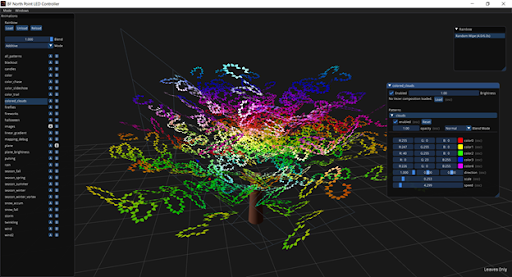
For the software side, the client was very insistent that there should be a great deal of variety in the patterns shown on the tree. We created a system that makes it very easy to define ever-changing light patterns, with interesting events to punctuate the tree programming over the course of the day. Unlike other systems, nothing is pre-recorded: everything is generated “live” over the course of the day. Internally, we used an advanced protocol for lighting control, more efficient than DMX and easier to configure. (Our lead developer: “It worked on the first try! That never happens!”)
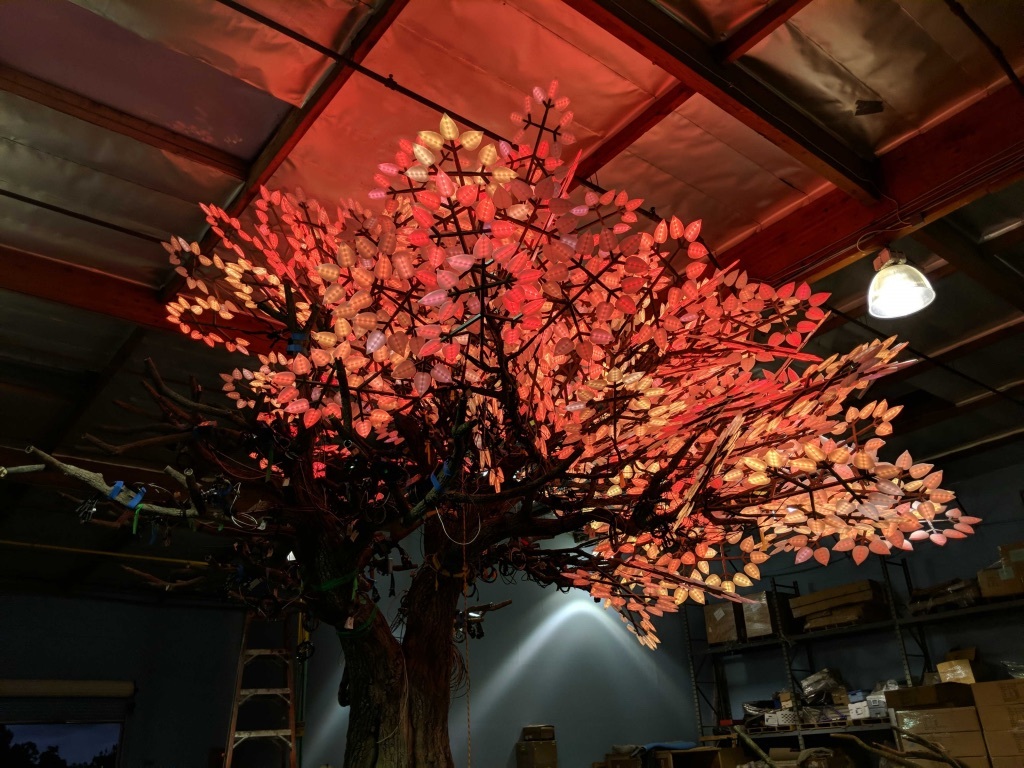
An important feature of this installation is a custom content management system that allows the user to easily schedule animations and content for the tree. This is a crucial component for building installations that not only look beautiful, but also help achieve a customer’s vision.
For another customer, we explored the creation of a large-scale volumetric (3D) display using LED columns. For this, we would model all the content and animation in three dimensions, and display it on an array of custom fabricated LED tubes.
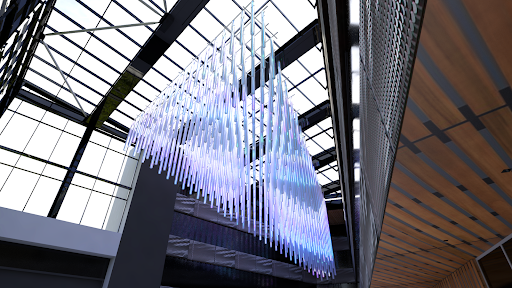
THE FUTURE!
Going forward, we are very excited by many of the new developments in this field. One very exciting advance is the use of LEDs with multiple channels, beyond the typical red, green and blue (RGB) components. For example, adding a dedicated white channel (RGBW) allows for a wider range of colors, and really creates a powerful impact. Some LED projects are now using an extra amber channel (RGBA) to create unusual effects. For example, Leo Villareal (famous for the Bay Lights) is using LEDs with an amber channel for his London Bridges project.
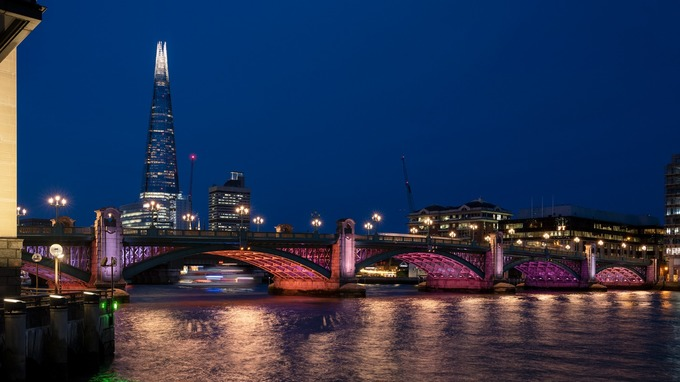
Another exciting area is new physical formats. For example, we recently saw this LED mesh display at Newark airport, and were very intrigued with how this can be used to create free-form sculptural shapes.
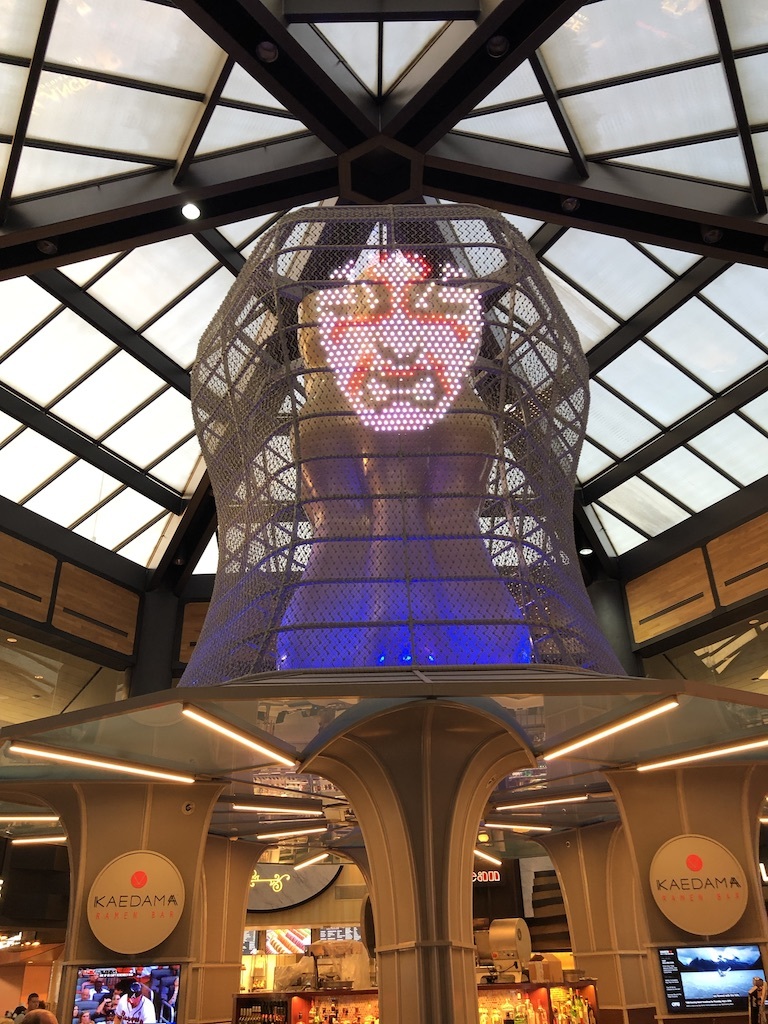
Finally, we are very intrigued by the possibility to make these large scale projects reactive and interactive. This large scale installation by TeamLab allows users to “send” shapes into an enormous volumetric display, using a simple web app:
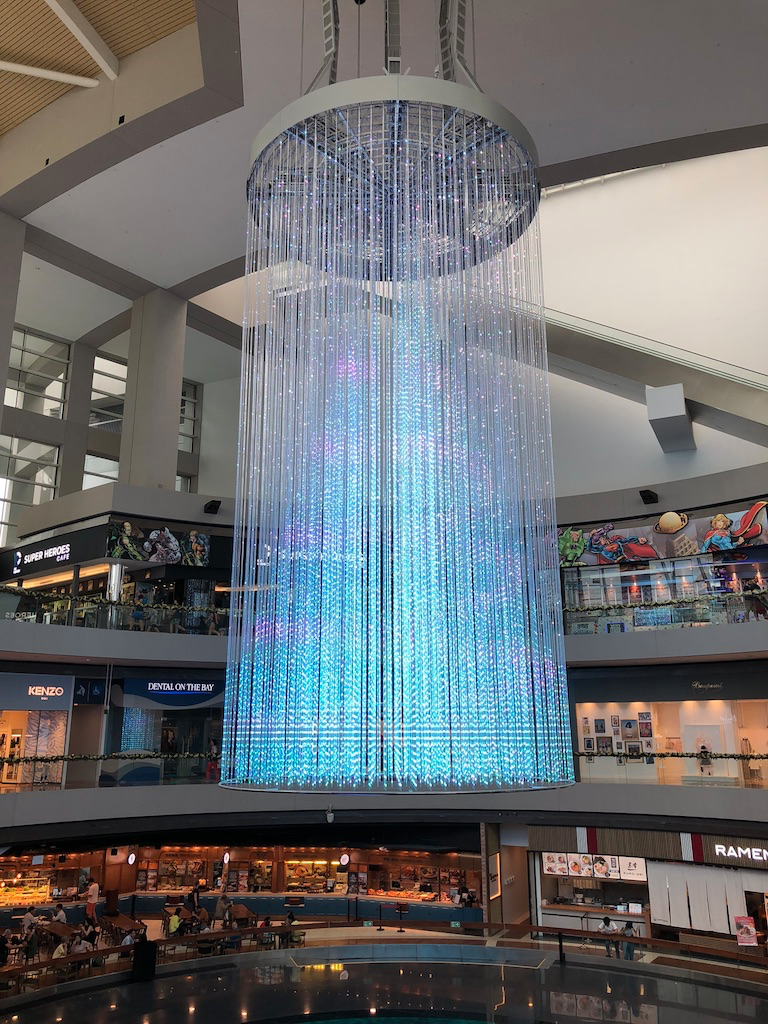
GUIDELINES FOR SUCCESS
If your organization is interested in building an impactful LED installation, here are some important things to keep in mind when looking for a partner:
1. Experience with creating interactive and immersive experiences
2. Deep skills and capabilities, including:
- Creative design – it’s got to look good and original
- Physical design – if it’s big, make sure it is strong and robust
- Networking – these pieces have a big networking and infrastructure component
- LED control software – making sure that content is fast, bright and ever-changing
- Content management software – allow customer to adapt and customize the LED experience
3. Close relations with suppliers, to ensure that you are getting the best and most current products available, and to allow for customization.
4. Focus on building to last, ensuring that the LED project will work reliably for a long time
If this sounds like something your organization needs, please reach out to us and let’s talk!
Britelite Immersive is a creative technology company that builds experiences for physical, virtual, and online realities. Read more about our capabilities or view our work.


